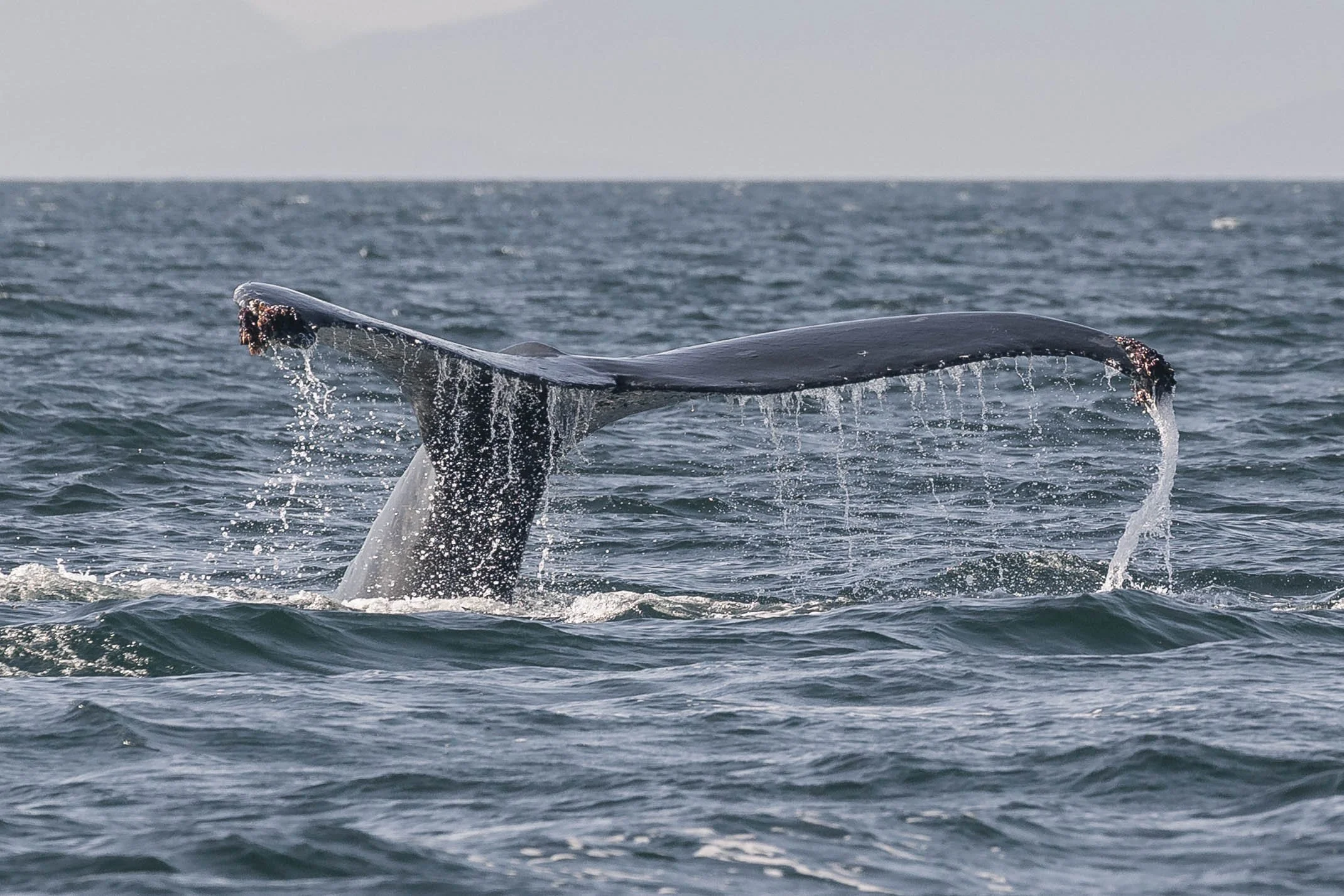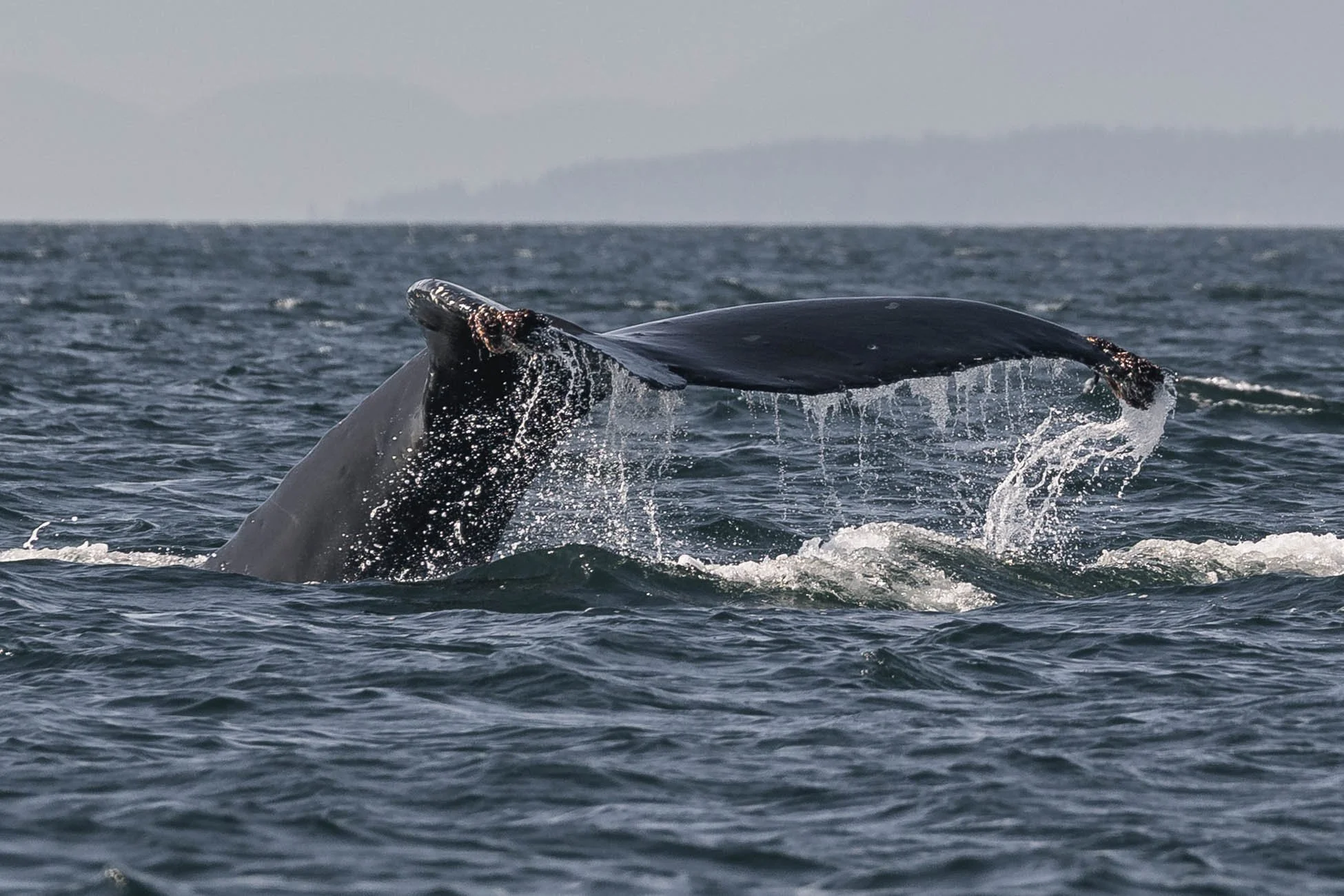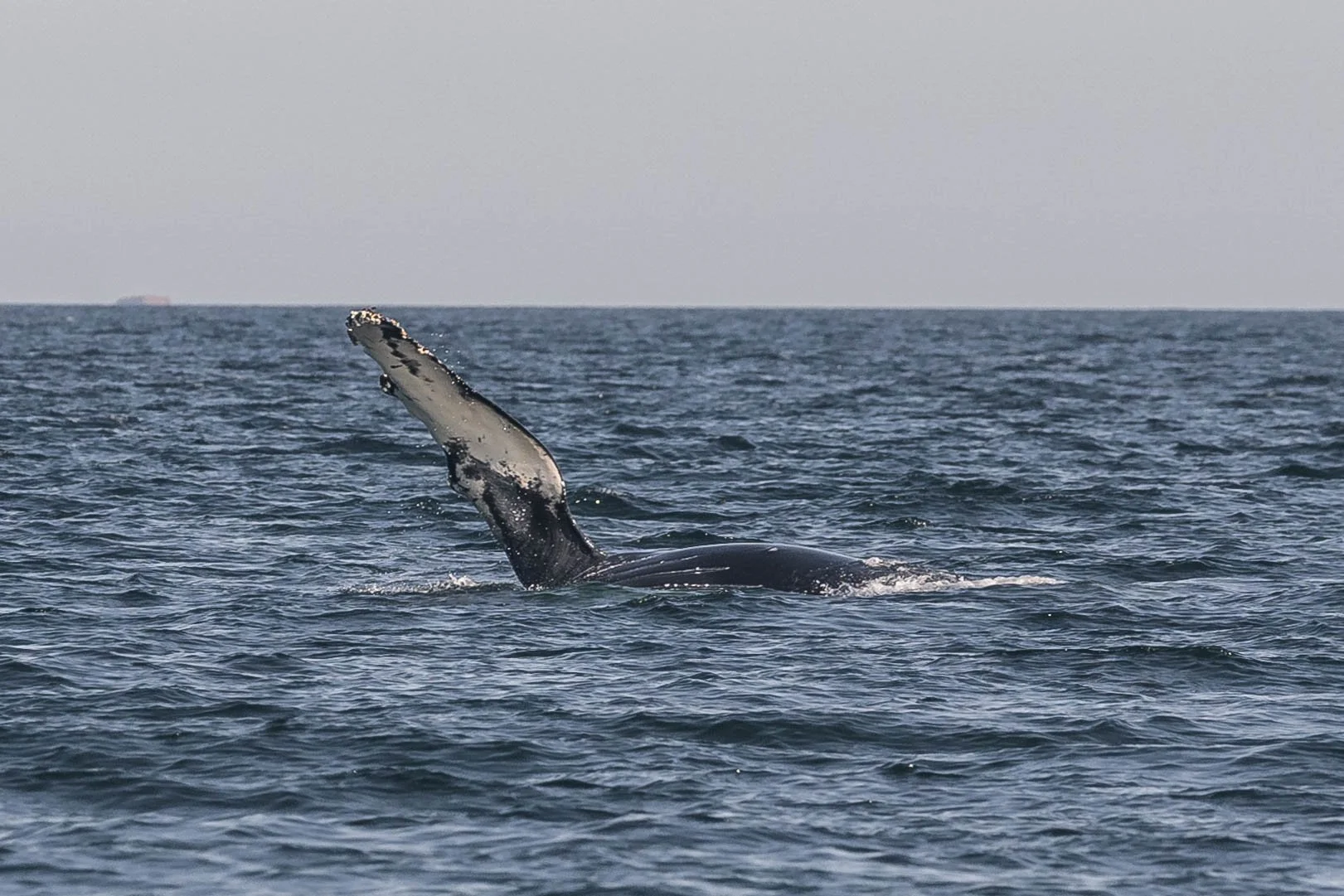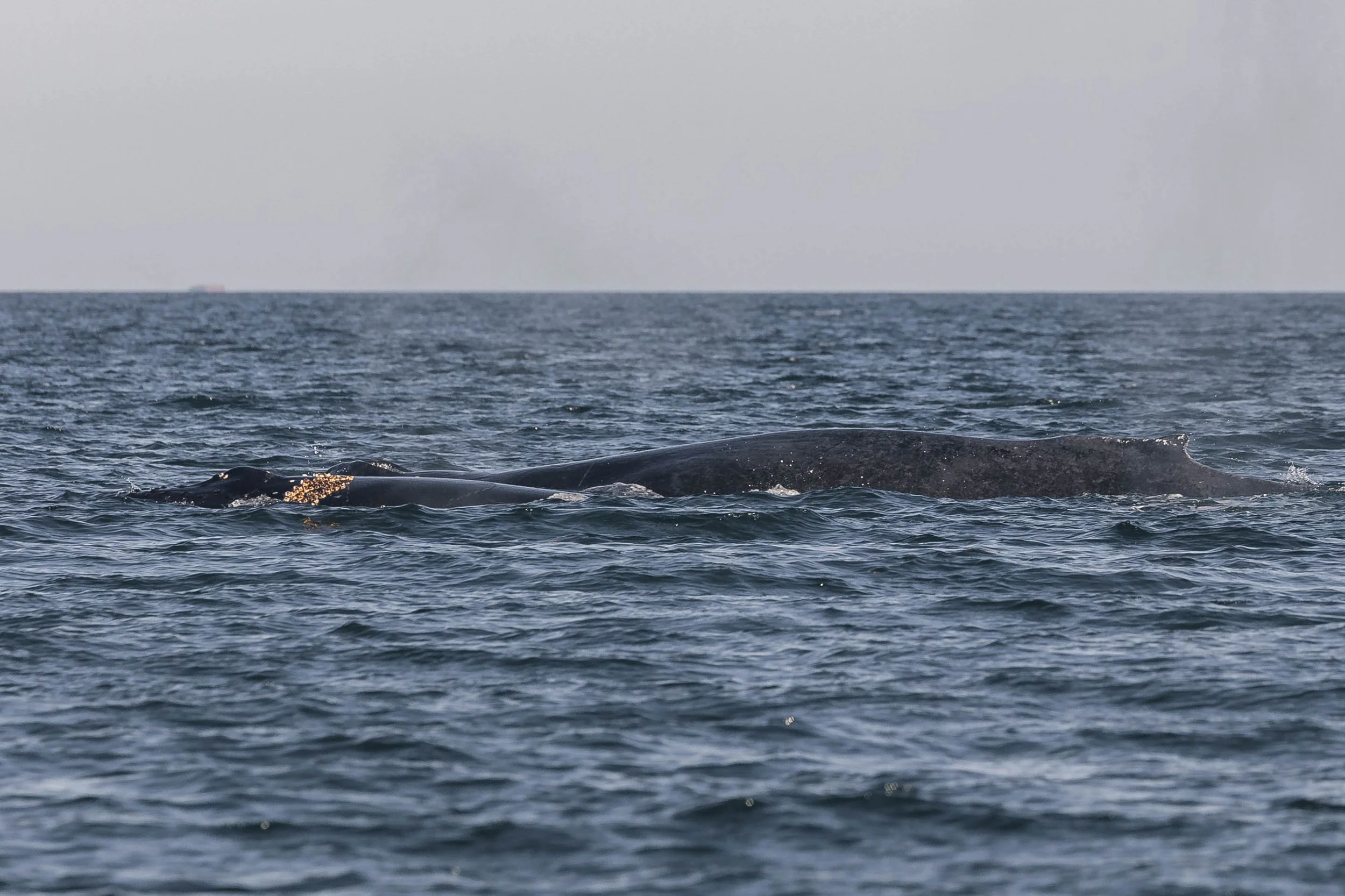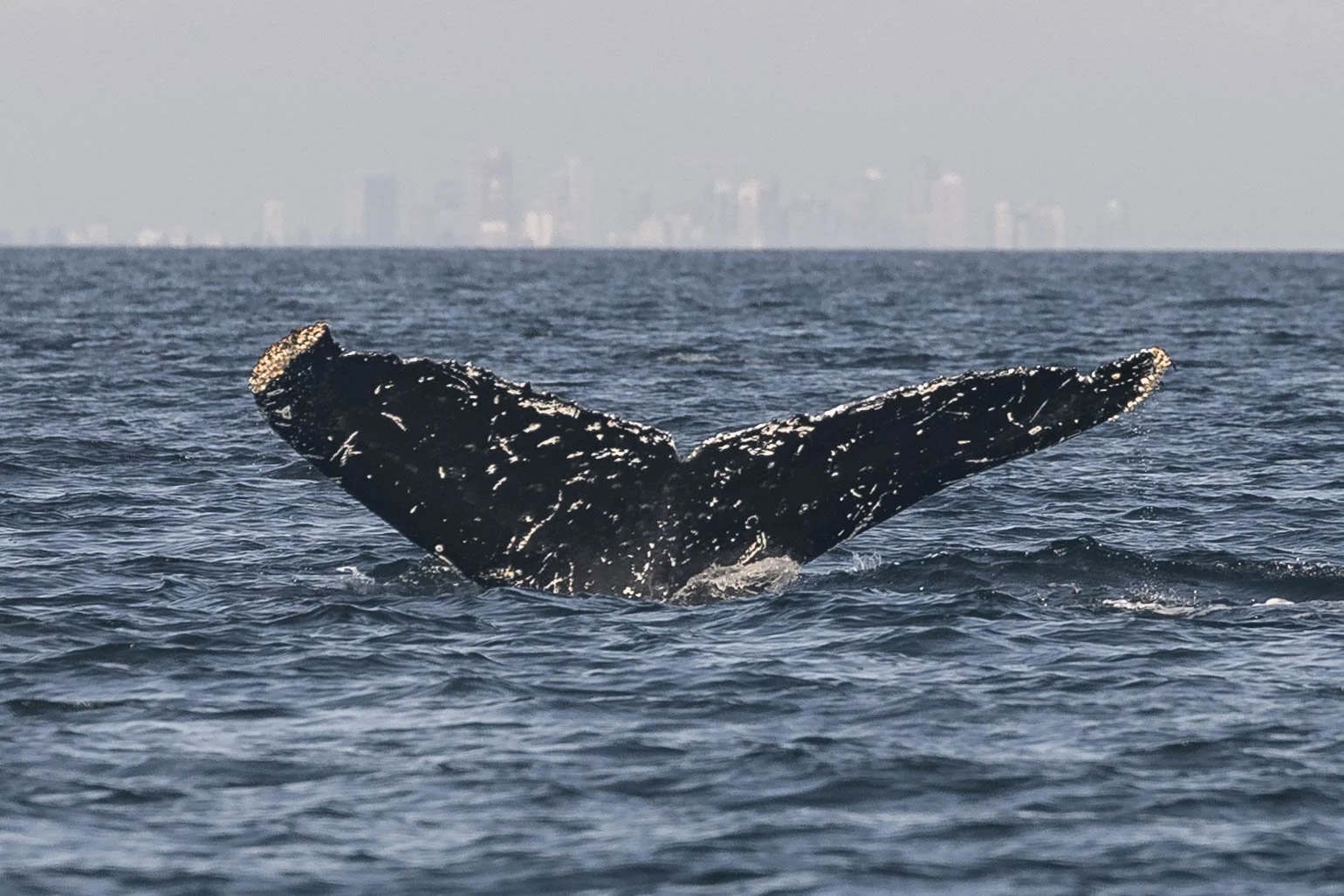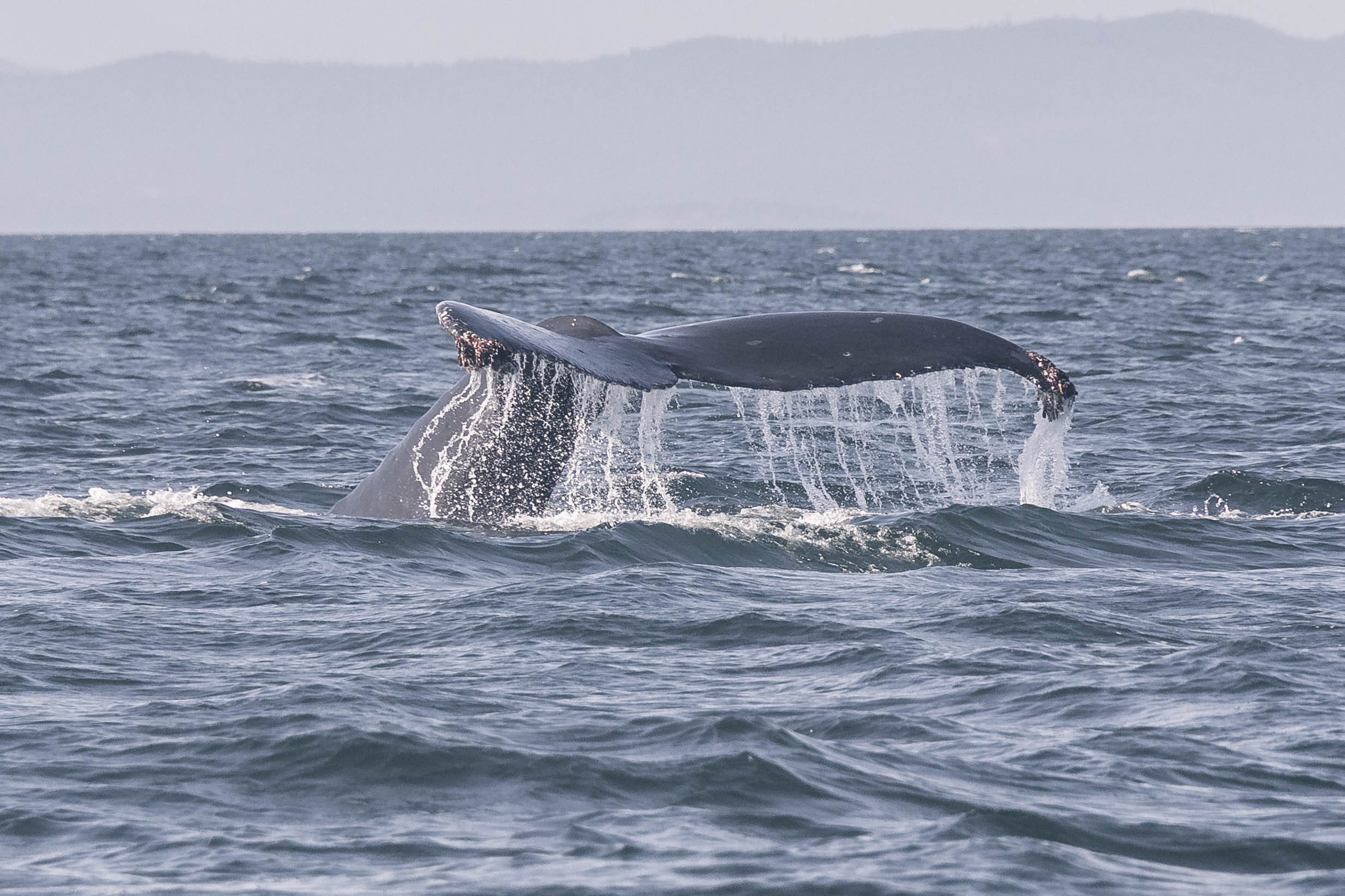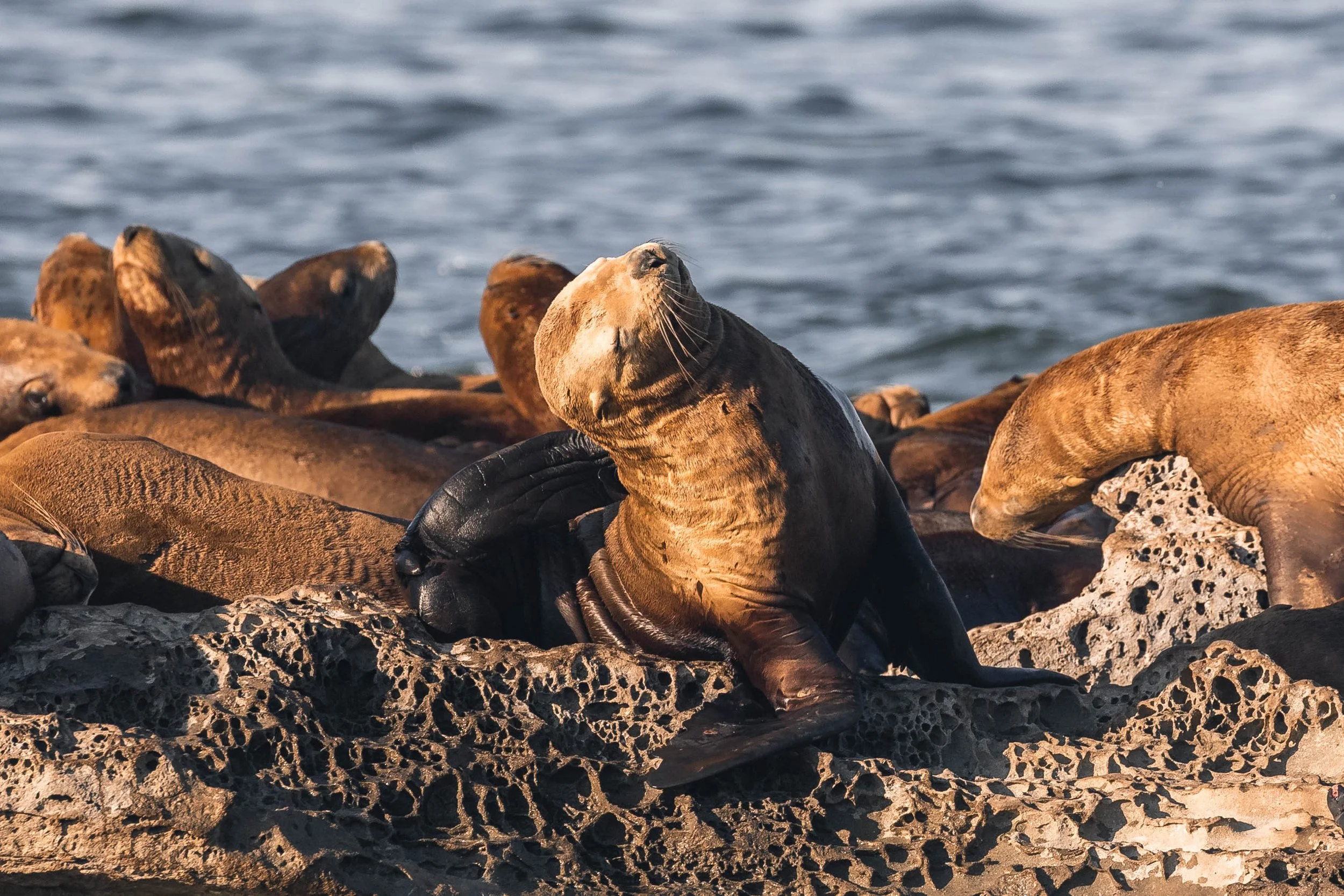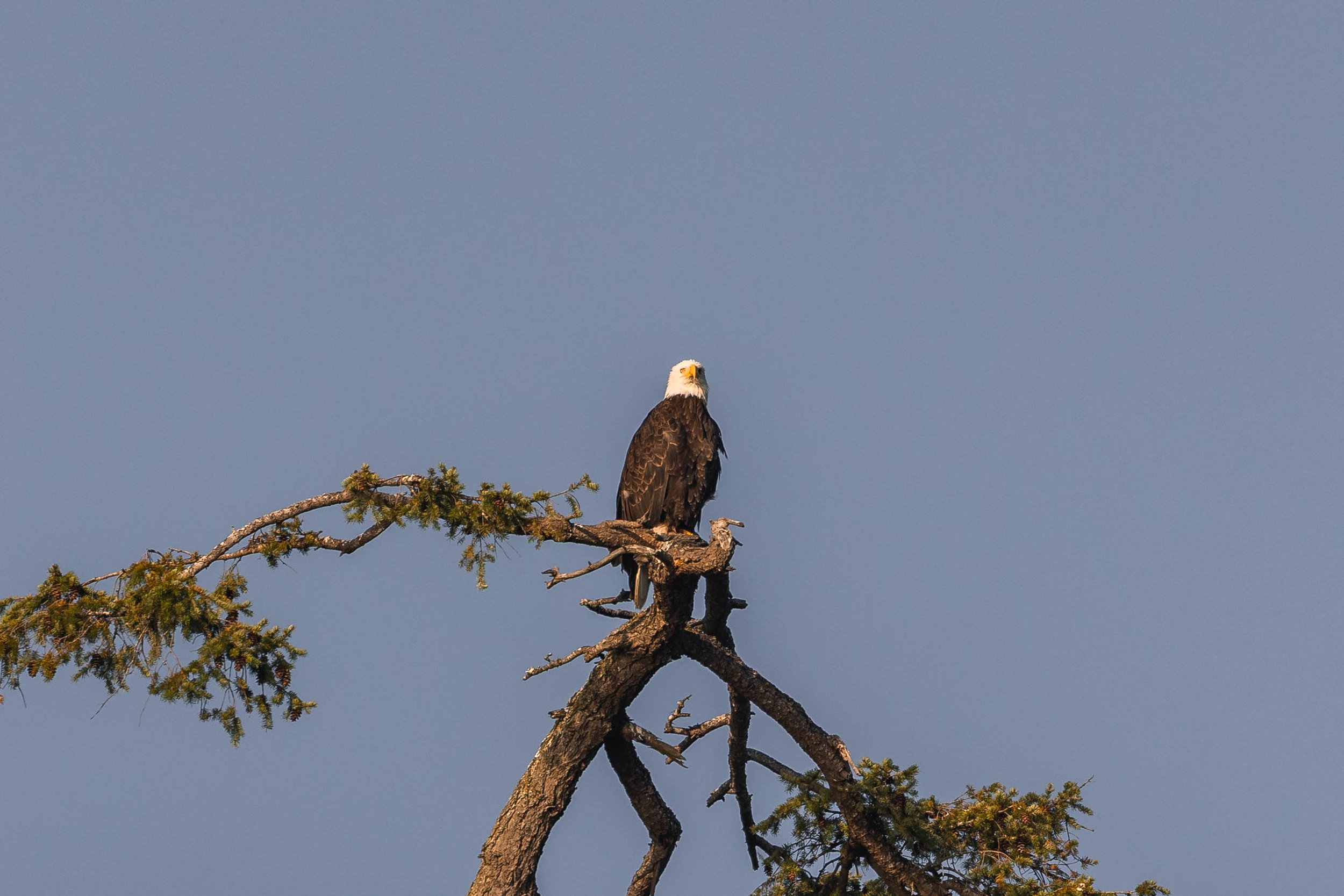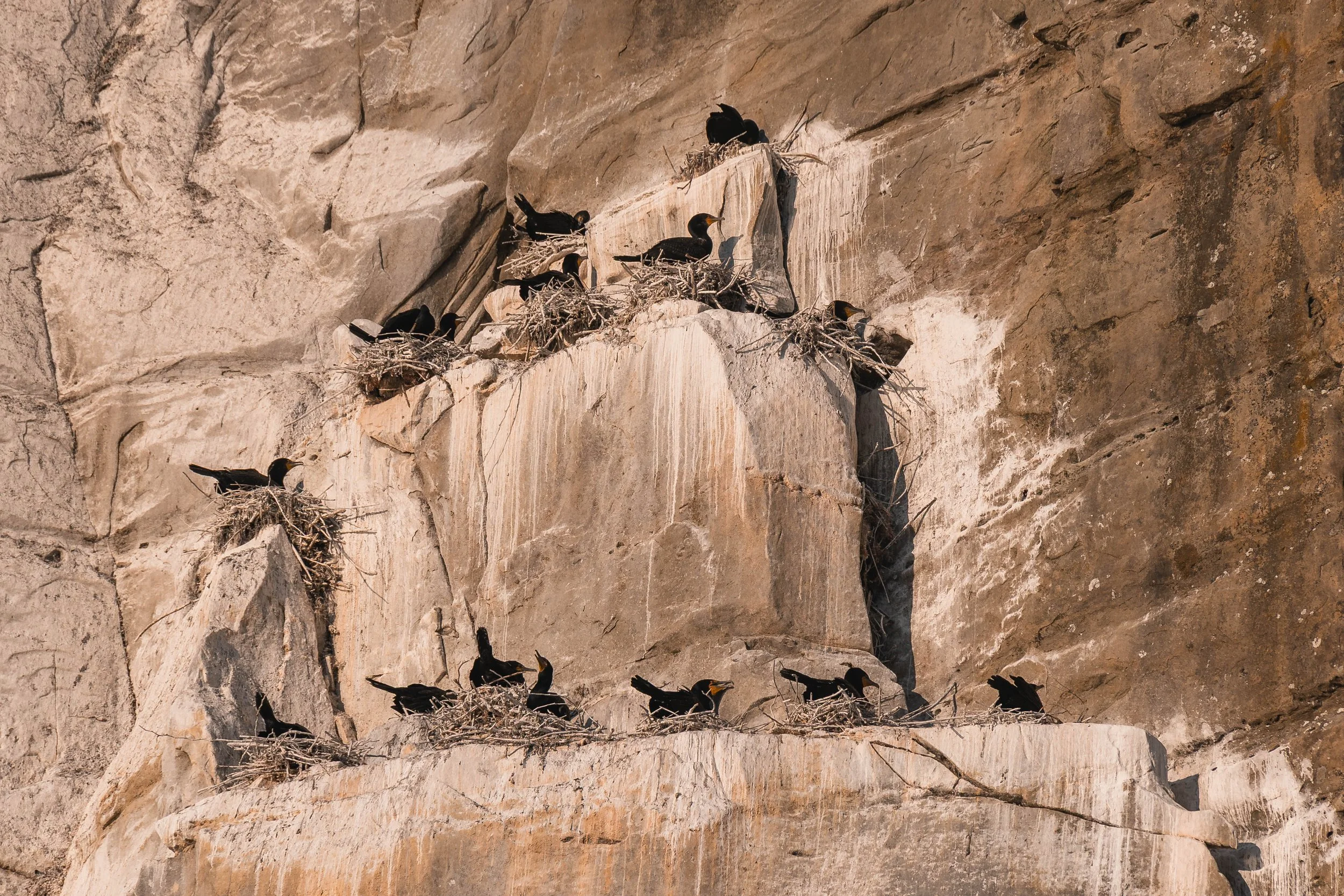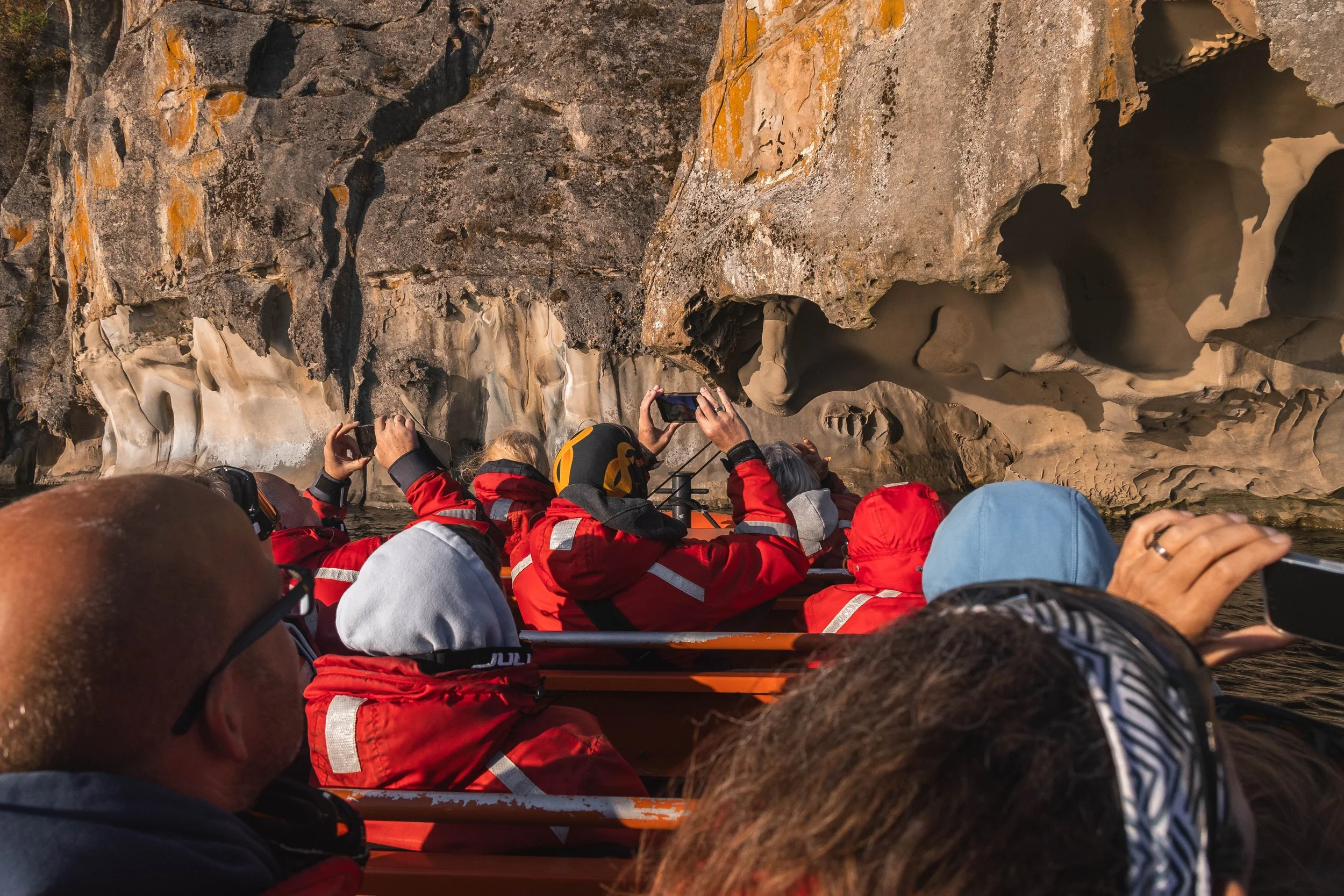July 26, 2025, 3:30 PM - The Ultimate Diet!
It was a wonderful afternoon to go whale watching as guests loaded up onto our vessels, ready to see what the Salish Sea had to offer. We made our way out into the Georgia Strait, where we’ve had a lot of recent success! Luckily for us, today was no different, and we saw so many humpbacks, including Kappa (BCX0158) and her 2025 calf! We love seeing all the new little faces coming to the feeding grounds for the first time. While baby humpbacks are cute, the moms are the real superstars!
Humpback females are pregnant for up to a year! For humpbacks, there’s no relaxation time during pregnancy. After all, they are growing a whale! Pregnant females have a monumental task. When humpbacks are here, this is their feeding grounds and they have to eat enough for the entire year! When they leave the nutrient waters of British Columbia, they have an over 10,000 km round-trip journey to complete over 4 to 6 months before they can fill their bellies again. Understandably, this will be much more taxing on a pregnant female. At the end of their migration back to the breeding grounds, having stopped eating already, females still must provide enough nutrients to their fetuses to sustain growth of over 90 pounds a day!
When mom makes it back to the breeding grounds and gives birth to her half, the calorie drain is just starting. She will give birth to a baby that is already over 2000 pounds, but shockingly, this is very small for a humpback, and that baby needs to grow really big, really fast if it’s going to have any chance at long-term survival. Luckily, mom's milk is rich and around 50% fat. While in the breeding grounds, mom will lose around 200 pounds of fat every single day, sustaining herself and her calf. To drink mom's precious milk, the calf will roll its tongue and place it next to mom’s mammaries. She will then shoot the milk directly into the calf’s mouth! Using this strategy in the breeding grounds, the calf will grow about 1 inch and gain 60 pounds a day! And it doesn’t stop there, because mom has to then migrate back to the feeding grounds, still feeding her precious cargo for over 5000 km (source)
Understandably, when Kappa returned to us with her calf, she was absolutely famished and has been consuming several thousand pounds worth of food every day, including Krill and small fish. Her calf looks happy and healthy and will get a whole year with Kappa to learn how to feed, migrate, socialize and play. When they return to the breeding grounds, the bond will be severed between the two and next year Kappa will likely return on her own. Producing a calf takes a tremendous toll on a female humpback, and females typically produce calves every 2-3 years.
With any luck, Kappa’s calf will return to the feeding grounds next year as an independent humpback like the rest of the whales we saw today! We got to see so many wonderful humpbacks, including Hendrix (BCY1278), Anvil (BCZ0410), Nike (BCX1377), Hammer (BCY1222), Holey Moley (BCY1220), Moresby (BCY0324 2022 calf) and some friends! Moresby is an excellent example of a whale that was brought to the Salish Sea to feed as a calf with their mother and has since returned every subsequent year on their own. Moresby’s mother is arguably the most iconic whale in the Salish Sea, Big Mama. Big Mama was the first whale to consistently return to the Salish Sea to feed after humpbacks were exterminated from the area. She returned in 1997 and has come back every year since. Moresby was Big Mama’s 7th calf, and this year she brought us her 8th! As Moresby continues to grow, it will be interesting to see how they carry on their mother’s legacy. Currently, we don’t know if Moresby is female or male, but perhaps one day Moresby will bring back a calf of their own!
As well as humpbacks, we also saw Steller sea lions, bald eagles and cormorants. If you want to see the photos from our wonderful journey today, check them out below!
Photos by Marine Naturalists Jordan Robinson and Hayleigh Hilbert.
Flukes up! Photo by Jordan Robinson
Moresby’s beautiful fuke. Photo by Jordan Robinson
It’s Hammer time! Photo by Jordan Robinson
Water trinkling off a fluke before a dive. Photo by Jordan Robinson
Nike’s iconic checkmark can be seen on the right side of his fluke. Photo by Jordan Robinson
Nike going for a dive. Photo by Jordan Robinson
Did you know that humpback pecs have all the same bones in them that you have in your arms? Photo by Jordan Robinson
Kappa’s 2025 calf showing off! Photo by Jordan Robinson
Kappa and her calf. Photo by Jordan Robinson
Did you know we can ID individuals by their flukes? This Fluke belongs to Kappa! Photo by Jordan Robinson
Anvil is easy to ID from her left side because of the bump which is actually a satellite tag scar. Photo by Jordan Robinson
Anvil going for a dive. Photo by Jordan Robinson
Anvil has a beautiful white fluke. Photo by Jordan Robinson
Every humpback has unique markings on their flukes, that’s how we know this is Moresby. Photo by Hayleigh Hilbert.
Flukes up. Photo by Hayleigh Hilbert.
Kappa’s calf breaching. Photo by Hayleigh Hilbert.
A Steller sea lion giving themsef a nice scratch. Photo by Jordan Robinson
Steller Sea lion enjoying th sun. Photo by Hayleigh Hilbert.
A harber seal pup hanging out with mom. Photo by Hayleigh Hilbert.
A bald eagle hanging out at the top of a tree. Photo by Jordan Robinson
A juvenile bald eagle. Did you know they don’t get that white head until they are around 5 years old? Photo by Jordan Robinson
Cormorants in their nests. Photo by Hayleigh Hilbert.
Guests looking at the Gabriola bluffs. Photo by Hayleigh Hilbert.
Guests enjoying their tour on Cascadia. Photo by Jordan Robinson
Bc Ferries going by Entrance Island. Photo by Jordan Robinson




